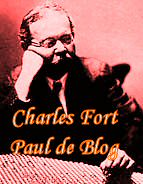Sunday, February 20, 2005
Tassie tiger cloning 'pie-in-the-sky science'
Sydney Morning Herald
By Deborah Smith, Science Editor
February 17, 2005

The more than $350,000 spent trying to clone the extinct Tasmanian tiger had gone to "pie in the sky" science and it was sensible for the Australian Museum to have abandoned the project, scientists said yesterday.
A University of Tasmania zoologist, Randolph Rose, said millions of dollars more would be needed to try to resurrect the thylacine and this money could be better spent on living animals such as Tasmanian devils, which have been ravaged by a mysterious facial tumour disease.
"Let's save what we've got before spending huge amounts of money on a very difficult problem," he said. "Cloning an extinct animal is pie in the sky science."
A La Trobe University researcher, Mike Westerman, said it was a pity the project had been stopped. "But available resources are limited and it is an eminently sensible decision. What they are trying to do is far too difficult, given our state of knowledge."
The museum team had worked out the partial code of two genes from parts of the cell called mitochondria, and the partial code of one gene from the nucleus. Tasmanian tigers had about 17 mitochondrial genes and 30,000 nuclear genes.
"The technical difficulties are immense. Let's work them out on rare living animals first and then apply it to something incredibly more difficult [like thylacines]," said Dr Westerman, who had extracted DNA from thylacine skin and worked out the code of two mitochondrial genes in the 1990s, before the museum project began.
Karen Firestone, a scientist who worked on the museum project until 2003, said trying to build a library of all the thylacine's genes had proven to be "fraught with difficulty".
But she believed other methods might work. "I still think there are avenues that could be pursued. But it is up to the museum what it wants to support or not. It's not my call."
The museum's director, Frank Howarth, said about $20,000 remained from donations to the project, including $337,000 from private benefactors, mainly the Discovery Channel, and $20,000 from the State Government. The museum covered the cost of a quarter of a senior researcher's salary for about four years.
He said he was confident more donations to continue the research could have been obtained. "But it would have been unethical to continue seeking external funds for something where we thought the chances of success were slim, if not non-existent."
http://www.smh.com.au/news/Science/Tassie-tiger-cloning-pieinthesky-science/2005/02/16/1108500157295.html
|
Sydney Morning Herald
By Deborah Smith, Science Editor
February 17, 2005

The more than $350,000 spent trying to clone the extinct Tasmanian tiger had gone to "pie in the sky" science and it was sensible for the Australian Museum to have abandoned the project, scientists said yesterday.
A University of Tasmania zoologist, Randolph Rose, said millions of dollars more would be needed to try to resurrect the thylacine and this money could be better spent on living animals such as Tasmanian devils, which have been ravaged by a mysterious facial tumour disease.
"Let's save what we've got before spending huge amounts of money on a very difficult problem," he said. "Cloning an extinct animal is pie in the sky science."
A La Trobe University researcher, Mike Westerman, said it was a pity the project had been stopped. "But available resources are limited and it is an eminently sensible decision. What they are trying to do is far too difficult, given our state of knowledge."
The museum team had worked out the partial code of two genes from parts of the cell called mitochondria, and the partial code of one gene from the nucleus. Tasmanian tigers had about 17 mitochondrial genes and 30,000 nuclear genes.
"The technical difficulties are immense. Let's work them out on rare living animals first and then apply it to something incredibly more difficult [like thylacines]," said Dr Westerman, who had extracted DNA from thylacine skin and worked out the code of two mitochondrial genes in the 1990s, before the museum project began.
Karen Firestone, a scientist who worked on the museum project until 2003, said trying to build a library of all the thylacine's genes had proven to be "fraught with difficulty".
But she believed other methods might work. "I still think there are avenues that could be pursued. But it is up to the museum what it wants to support or not. It's not my call."
The museum's director, Frank Howarth, said about $20,000 remained from donations to the project, including $337,000 from private benefactors, mainly the Discovery Channel, and $20,000 from the State Government. The museum covered the cost of a quarter of a senior researcher's salary for about four years.
He said he was confident more donations to continue the research could have been obtained. "But it would have been unethical to continue seeking external funds for something where we thought the chances of success were slim, if not non-existent."
http://www.smh.com.au/news/Science/Tassie-tiger-cloning-pieinthesky-science/2005/02/16/1108500157295.html
|

